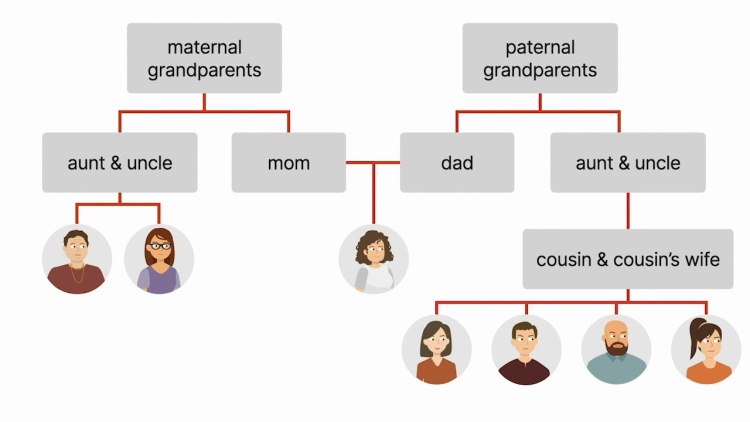Estate of Locke
New Hampshire Supreme Court
813 A.2d 1172, 148 N.H. 754 (2002)
- Written by Mary Pfotenhauer, JD
Facts
Geraldine Locke died intestate. Locke was survived by her first cousins Jean and Marion on her maternal grandparents’ side (plaintiffs), and by several first cousins once removed on her paternal grandparents’ side (defendants). First cousins are four degrees of kinship away, and first cousins once removed are five degrees of kinship away. Under RSA 561:1, II(d), if a decedent is not survived by any issue, parent, or issue of a parent, then half of the estate goes to the surviving paternal grandparents. If both grandparents are dead, then that half passes to the grandparents’ surviving issue. If all of the surviving issue of the grandparents are of the same degree of kinship, then they all take equally, but if they are not all of the same degree of kinship, then the issue with a more remote degree of kinship take by representation. The other half of the estate passes to the maternal grandparents’ side in the same way. However, RSA 561:3 provides that collateral descendants who are more than four degrees of kinship from the decedent may not take by representation. The administratrix of Locke’s estate asked the probate court to determine Locke’s heirs. The probate court found that the maternal first cousins were entitled to share equally in one half of Locke’s estate, and that the paternal first cousins once removed were entitled to share equally in the other half of the estate. Jean and Marion appealed, arguing that they were entitled to the entire estate because RSA 561:3 prohibits distribution to the paternal first cousins once removed, as they are more than four degrees of kinship away from Locke.
Rule of Law
Issue
Holding and Reasoning (Broderick, J.)
What to do next…
Here's why 899,000 law students have relied on our case briefs:
- Written by law professors and practitioners, not other law students. 47,000 briefs, keyed to 994 casebooks. Top-notch customer support.
- The right amount of information, includes the facts, issues, rule of law, holding and reasoning, and any concurrences and dissents.
- Access in your classes, works on your mobile and tablet. Massive library of related video lessons and high quality multiple-choice questions.
- Easy to use, uniform format for every case brief. Written in plain English, not in legalese. Our briefs summarize and simplify; they don’t just repeat the court’s language.





